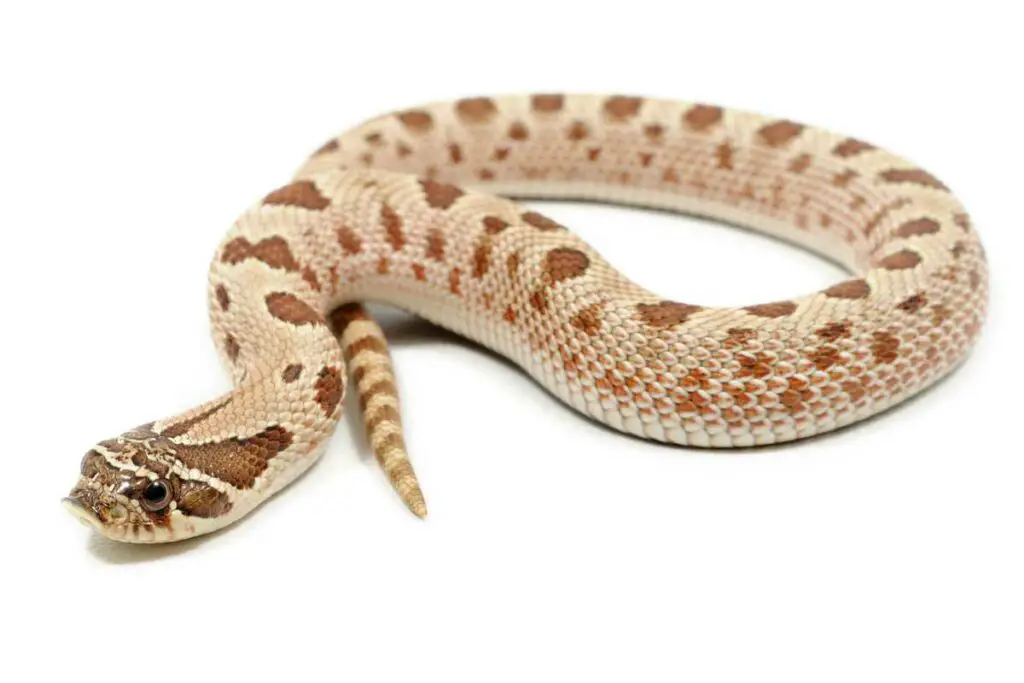Baby cardinals require a diet that is slightly different than that of their adult relatives.
So, what exactly do these baby birds eat at such a young age?
A baby cardinal’s diet consists mainly of different types of insects, such as grasshoppers and beetles, as well as different types of seeds, like safflower and black oil sunflower seeds. Baby cardinals typically achieve this diet by getting it secondhand from their parents.
Below, we’ll explore the following questions about the types of food that baby cardinals eat and how their diets work:
- What types of insects and bugs do baby cardinals eat?
- What types of seeds do baby cardinals eat?
- How do cardinals fulfill their diets?
- How much does a baby cardinal need to eat?
- How does a baby cardinal diet differ from an adult cardinal diet?
Table of Contents
What Types of Insects and Bugs Do Baby Cardinals Eat?
Insects are one of the primary sources of sustenance for baby birds.
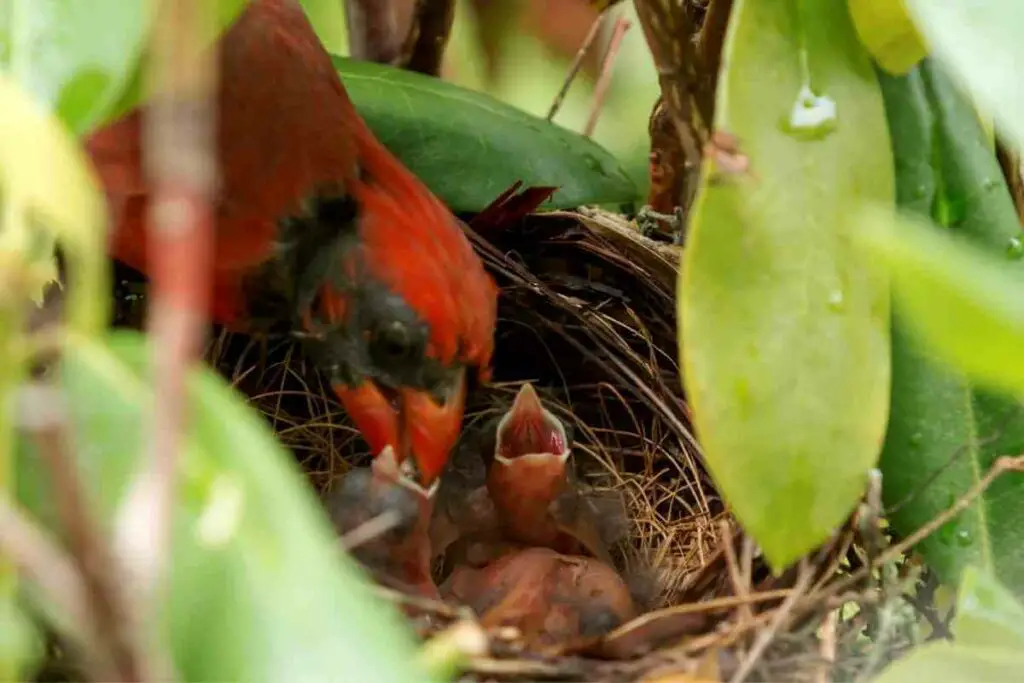
Some of the most common insects that baby cardinals will consume include:
- Grasshoppers
- Beetles
- Leafhoppers
- Katydids
- Caterpillars
These insects are the main source of protein for baby cardinals, which aids them in muscle growth in their early days of life.
What Nutrients Do Grasshoppers Provide?
Grasshoppers, leafhoppers, and katydids are especially important in a baby cardinal’s diet since they are a source of carbs, fat, and protein.
It’s important for baby birds to get fattened up so that they can survive cold weather and grow to be big and strong.
What Nutrients Do Beetles Provide?
Beetles are great, protein-rich sources of nutrients in a baby cardinal’s diet.
Depending on the beetle, the protein content will vary, but they typically also contain decent amounts of calcium and iron.
What Nutrients Do Caterpillars Provide?
Because baby cardinals consume caterpillars, the parent birds need to have a sufficient caterpillar food source (an insect rich in protein and iron).
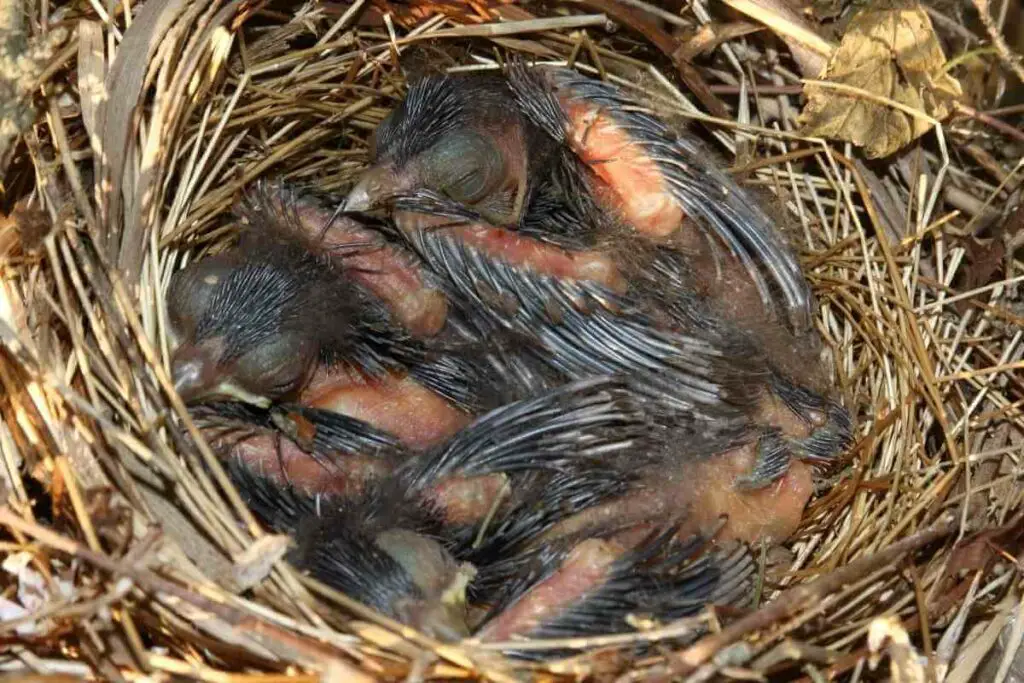
This is why many people who want to see cardinals in their garden will plant foliage that commonly attracts butterflies, such as:
- butterfly bushes
- passionflower
- milkweed
- and snapdragon
What Types of Seeds Do Baby Cardinals Eat?
In addition to insects, seeds make up a large part of a baby cardinal’s diet.
The most common types of seeds that cardinals will feed their young include:
- Safflower seeds
- Black oil sunflower seeds
While cardinals may occasionally feed their young other types of seeds, such as box elder seeds or ragweed seeds, their seed diet is primarily sunflower and safflower.
Quick Note: Adult cardinals, on the other hand, have a much wider variety of seeds in their diets, but we’ll get to that later on.
What Nutrients Do Safflower Seeds Provide?
The reason that safflower seeds are so important for a baby cardinal is that they are a huge source of fat and protein, which the babies need to bulk up and become strong enough to get around on their own.
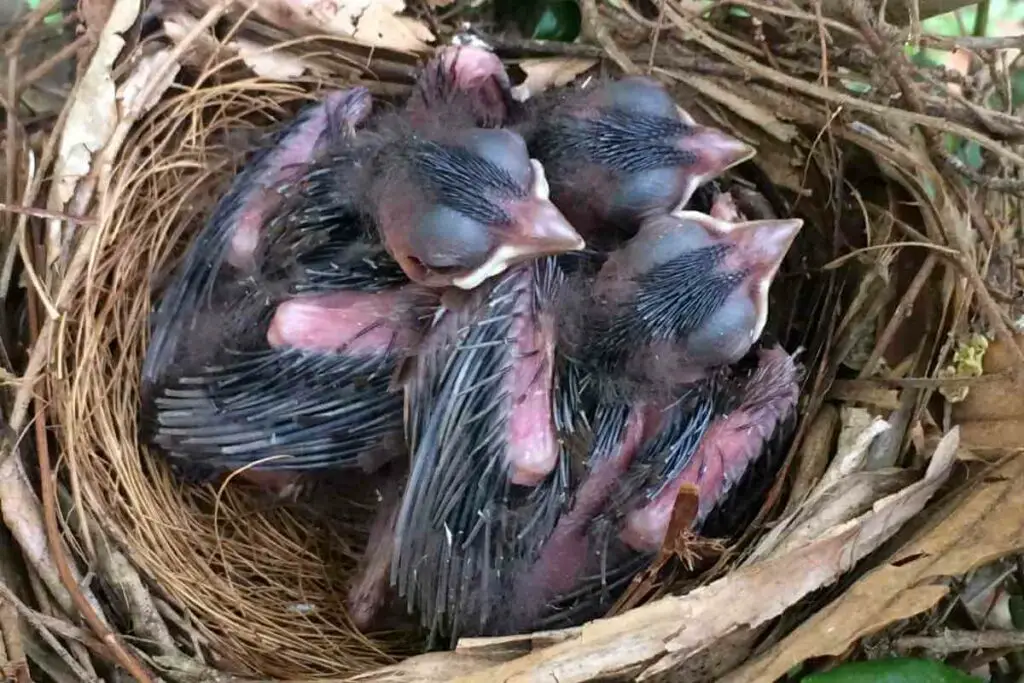
People who want to attract cardinals to their gardens commonly include safflower seeds in their bird feeders or scatter them beneath bushes where the birds go to forage.
What Nutrients Do Sunflower Seeds Provide?
Black oil sunflower seeds are also big in a baby cardinal’s diet since they have a high oil content that isn’t found in other kinds of sunflower seeds.
They also contain important nutrients for baby cardinals, such as Vitamins E and B, potassium calcium, protein, iron, and fat.
Black oil sunflower seeds are also quite accessible for adult cardinals to bring to their young because they have thin and easy-to-crack shells.
How Do Cardinals Fulfill Their Diets?
Since baby birds are often homebound in their nests for the beginning portion of their life, they rely on their parents to feed and take care of them.
They can’t exactly fly out of the nest to gather seeds or insects, so instead, they wait in their nests with their fellow chicks for the parents to return with food.
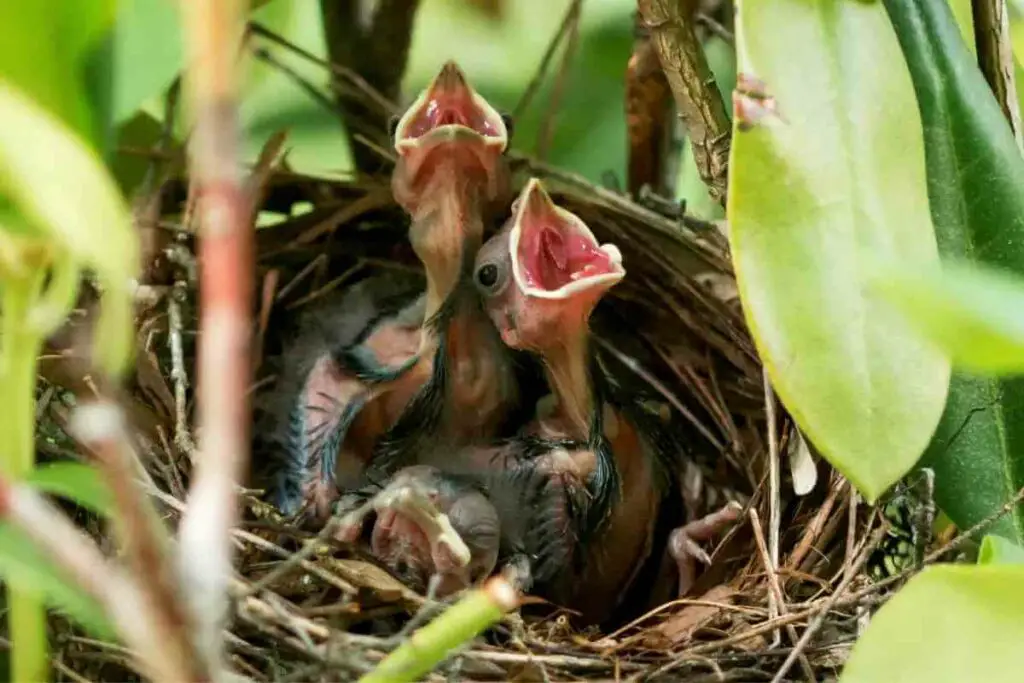
Parent cardinals will actually eat the seeds or insects, then feed their young via regurgitating the food before it has digested into the mouths of the babies.
Once the babies reach their fledgling phase (the time period between birth and the point at which a bird can fly), they will start to learn how to get their own food.
How Much Does a Baby Cardinal Need to Eat?
Baby cardinals need to eat frequently in order to sustain their fragile health. Parent cardinals will feed their hatchlings anywhere between 3-8 times per hour. As the babies get older, though, their diet will start getting reduced.
For example, once the babies are about five days old, their diet gets cut in half.
Furthermore, once the fledgling stage arrives, 6-7 week old babies can start gathering their own seeds and bugs.
How Does a Baby Cardinal Diet Differ from an Adult Cardinal Diet?
The main difference between a baby cardinal’s diet and an adult cardinal’s diet is the frequency and the variety of food.
While baby cardinals need to eat frequently and every hour, adult cardinals feed only at certain times of the day, such as dusk.
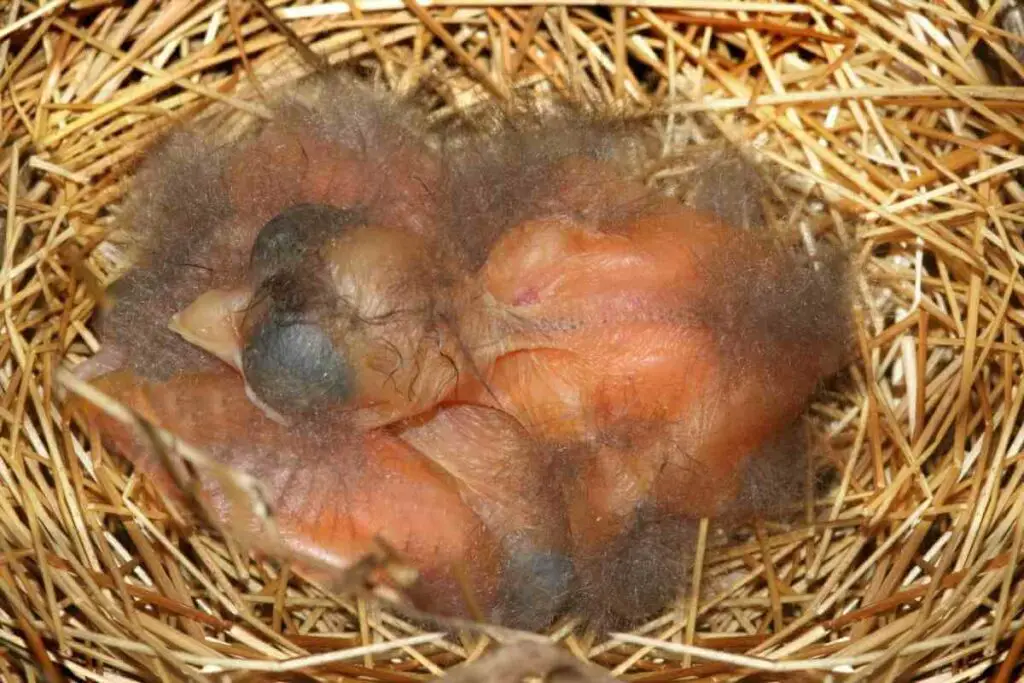
Additionally, baby cardinals only eat certain seeds and bugs, while adult cardinals will eat anything from berries to fruit, nuts, seeds, bugs, grains, and cracked corn.
Conclusion
Baby cardinals require frequent feeding throughout the day and a selection of seeds and bugs to keep them satisfied.
Parent cardinals will regurgitate safflower seeds, black oil sunflower seeds, and certain insects into their babies’ mouths to provide ample protein and fat for their development.




